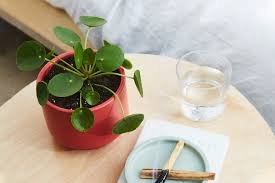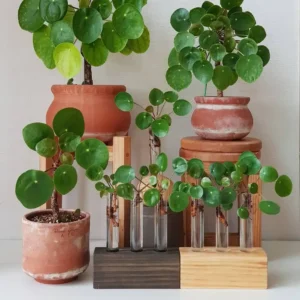
Pilea peperomiodes is widely known as the Chinese money plant, Chinese missionary plant, pancake plant, and UFO plant due to its dome of beautiful and unique leaves that resemble small lily pads.
The Chinese money plant hails from southern China and was introduced into Britain at the turn of the twentieth century. Due to its ease of propagation, house plant enthusiasts quickly propagated it within their networks (hence its nickname of “pass-it-along plant”) before its popularity on social media increased significantly a few years ago. Even so, Pilea peperomiodes can be difficult to acquire – try visiting a specialist house plant shop or online provider instead, or ask one of your friends who owns one to pot one of its many babies that pop up around its base for you if possible!
Pilea peperomiodes is an easy plant suitable for beginners as it’s quite forgiving of neglect in terms of watering and feeding needs. But be patient; care for this plant properly and you will see fast growth, glossy green leaves, and lots of babies at its base!
Each Pilea peperomia grows differently; your plant may become more upright as it matures, producing small flowers on older branches.
How to Grow Pilea Peperomiodes 
Begin by sowing the seeds in well-drained compost. Place in an area with plenty of light but without direct sun—water when necessary when the soil dries out.
Where to Grow Pilea Peperomiodes
Pilea peperomiodes are best grown in warm environments that do not fall below 12 degrees C during winter, such as a greenhouse. Place it somewhere bright where it will receive some direct sun during the day – although direct midday and afternoon sun should be avoided as this will damage its leaves.
How to Plant Chinese Money Plant
There’s no need to remove the plant from its plastic pot when you first bring your Chinese money plant home (unless it’s root-bound), just place it inside another, more decorative one. Repot when roots emerge at the bottom of its pot if necessary and plant in a mixture of 2:1 soil-based compost (peat-free multipurpose) and perlite with drainage holes at its base for best results.
Caring For Pilea peperomiodes

Pilea peperomiodes are easy to take care of: just ensure the top few centimeters of compost dry out between watering sessions, and drain any excess away afterward. Like most house plants, Pilea peperomiodes does not like its soil being constantly wet – similar to most other house plants! In winter you should cut back by approximately 50-60 percent. Apply weak or diluted house plant food once every month; wipe leaves occasionally to keep them shiny and free from dust; misting can help – although misting isn’t essential! Plants will naturally gravitate towards light giving rise to tilted appearances so rotating it daily is vitally important if repotting is required – in springtime repotting is required if root root-bound plant has taken hold.
How to Propagate Chinese Money Plant
Pilea peperomiodes is currently one of the most beloved plants on social networks and an unrivaled star when it comes to propagation. Also referred to as missionary plant, pancake plant, or Chinese money plant.
Pilea peperomiodes is an easy species to propagate. It regularly produces offsets or pups at its base that can be carefully removed with a fork and put into an inch of water for root formation; shortly thereafter they’ll be ready to pot up into new plants that will rapidly multiply in no time at all.
Growing Pilea Peperomiodes: Problem-Solving
Yellow or brown leaves at the base of a plant are considered normal; these are older leaves that have died and fallen off naturally. However, yellow leaves that appear everywhere could indicate overwatering or underwatering and need to be monitored carefully to avoid this happening again.
Drooping leaves may be caused by insufficient or excess irrigation; check your soil to find out which of these scenarios applies to your plant.
Lack of sunlight may be to blame for leaves curling or bending inward, making them turn over and bend in.
Pale leaves may indicate too much direct sunlight; brown spots on them indicate sunburned leaves.
Scale insects can be a nuisance. Look out for small brown lumps on the leaves, and wipe away using cotton wool soaked in an insecticide made up of fatty acids or plant oils as soon as you spot any. Act quickly; otherwise, the problem will spread and endanger its health!
Powdery mildew often appears as white patches on leaves, so remove affected ones and increase airflow throughout your plant to promote better air quality.
FAQs
Q1. What steps can be taken indoors to care for a Pilea plant?
Successful care for these indoor plants involves providing bright indirect lighting, watering as needed and regularly rotating.
Q2. What can I do to accelerate the growth of my Pilea peperomiodes?
To maximize its development faster, ensure it receives bright indirect lighting, consistent watering and occasional fertilization.
Q3. How much light do Pilea peperomiodes trees require?
They require bright indirect light.

